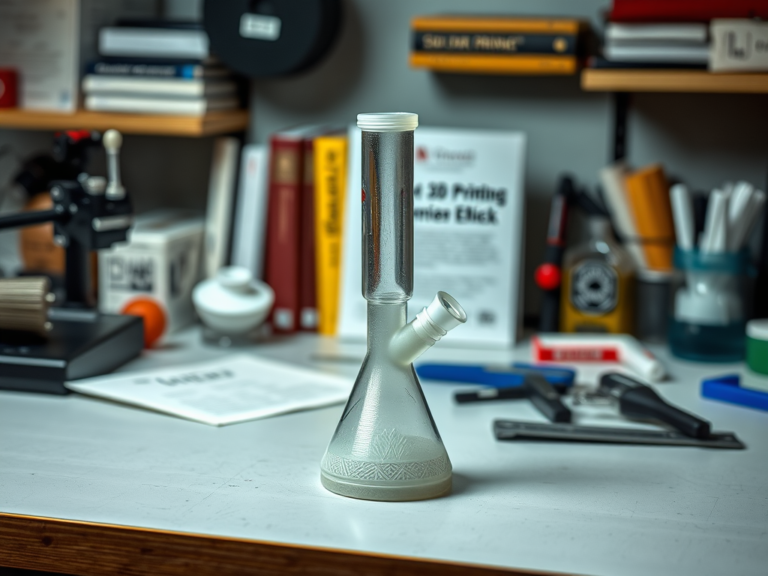
Introduction
3D printing has revolutionised modern manufacturing, enabling users to create a vast range of objects, from household items to medical prosthetics. But its powers have also begged ethical and legal questions, especially with relation to the manufacturing of drug paraphernalia like a tiny meth pipe. This article explores the implications of 3D printing drug-related items, the associated risks, and the broader impact on society.

Understanding 3D Printing and Its Capabilities
What is 3D Printing?
Additive manufacturing, sometimes referred to as 3D printing, is the technique whereby a three-dimensional object is created by layer-by-layer material deposition. Popular in many sectors, this technology lets one customise it quickly and prototypically.
The Accessibility of 3d Printing
With affordable desktop 3D printers available, individuals can now print complex objects at home. This accessibility, however, has raised concerns about illegal and controversial applications, including the creation of drug paraphernalia like small meth bongs.
The Legal Aspects of 3D Printing Drug Paraphernalia
Is It Illegal to 3D Print a Small Meth Bong?
In many jurisdictions, the production, sale, and possession of drug paraphernalia are illegal. While 3D printing itself is not unlawful, creating items intended for illicit drug use can lead to legal consequences.
US Laws on Drug Paraphernalia
The Controlled Substances Act (CSA) forbids the sale and distribution of controlled substances in the United States. States have additional laws, so those caught with such items can be fined, charged criminally, or even imprisoned.
International Legal Implications
Other countries, such as Canada, the UK, and Australia, have strict laws on drug paraphernalia. Possessing or distributing 3D-printed meth bongs can lead to severe penalties.
Ethical and Social Concerns
The Role of 3d Printing in Harm Reduction
Some argue that 3d printing drug paraphernalia can aid harm reduction by ensuring users have access to safer alternatives. However, opponents believe it encourages illegal drug use.
The Responsibility of 3d Printer Owners
Those with access to 3d printers must consider the ethical implications of their creations. Printing drug-related items can contribute to substance abuse problems and undermine public health efforts.
Practical Risks of 3D Printing a Meth Bong
Material Safety Concerns
Most consumer-grade 3D printers use materials like PLA or ABS plastic, which are not heat-resistant and may release harmful chemicals when used for smoking. Using an improperly printed bong can be hazardous to health.
Potential Health Risks
- Toxic Fumes: Plastics can release harmful substances when exposed to high temperatures.
- Structural Integrity Issues: 3d-printed objects may have small cracks, making them difficult to clean and prone to bacterial buildup.
- Inhalation of Particles: Poorly printed bongs can release microplastics, posing long-term health risks.
Alternatives and Safer Solutions
Seeking Legal Smoking Accessories
- Purchasing well-made smoking accessories guarantees safety and regulatory compliance for those who legally use drugs.
- Supporting Efforts at Harm Reduction
- Instead of participating in dangerous 3d printing projects, people can help harm reduction initiatives that advance better drug use and treatment choices.
READ MORE – How to 3D Print Ender 3 V2 Slot Cover Easily?
FAQs:
1. Can I get arrested for 3D printing a small meth bong?
Yes, depending on your location. Many countries and states have strict laws prohibiting the production and possession of drug paraphernalia, including 3d-printed items.
2. What materials are used in 3D printing drug paraphernalia?
Common materials include PLA, ABS, and resin. However, these are not heat-resistant and can release toxic fumes when exposed to high temperatures.
3. Are there legal uses for 3d-printed bongs?
In regions where cannabis use is legal, 3d-printed bongs may be allowed. However, they must meet safety and health standards.
4. How can I prevent illegal use of my 3D printer?
Avoid sharing or distributing digital files for illegal items, and use your printer responsibly for legal and ethical purposes.
5. What are safer alternatives to a 3d-printed bong?
Purchasing professionally manufactured smoking accessories from reputable sources ensures safety and compliance with the law.
Conclusion
Although 3D printing presents great promise, its use to produce drug paraphernalia creates major ethical, legal, and medical issues. People should look for safer, legal alternatives and consider the hazards before participating in such events. Responsible use of 3D printing will guarantee that its advantages are used for creative and positive ends.